SCIENTIFIC BOARD
(By alphabetical order)
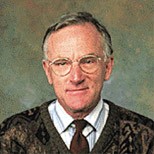
Peter Andrews
Peter Andrews is a researcher in the Department of Palaeontology, Natural History Museum, London. He works on the evolution of primates, with the emphasis on Miocene apes leading to the origin of living apes and humans. He has done extensive taphonomic work concentrating on small mammal taphonomy which culminated in his book Owls, Cave and Fossils published in 1990. He has also investigated taphonomic processes affecting large mammals and has recently completed a 20 year project investigating taphonomic processes in the UK and in Arabia to complement the extensive work done on taphonomic modifications in tropical environments.
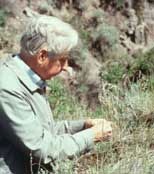
Charles Kimberlin (Bob) Brain
Honorary Associate Editor of Journal of Taphonomy.
Charles Kimberlin (Bob) Brain was born in 1931 in Zimbabwe. He is an African naturalist who has spent most of his career in museums, particularly the Transvaal Museum in Pretoria, where he has been, at various times, Curator of Invertebrates, Lower Vertebrates and Palaeontology. He also served as Director there for 23 years. He is married to Laura Kraan and they have four children. Bob’s PhD (1957, University of Capetown) was on the South African ape-man-bearing cave deposits. This was followed in 1981 by a DSc degree from the University of the Witwatersrand on the new discipline of African Cave Taphonomy that he pioneered. He has four honorary doctorates and has been president of seven professional societies.From 1965 onwards, Bob undertook a 25-year-long investigation and excavation of the Swartkrans cave and its fossil assemblages, which convinced him of the importance of predation to the course of animal, including human, evolution. He is currently investigating the roots of predation among fossils of the earliest animals in Neoproterozoic limestones of Namibia.
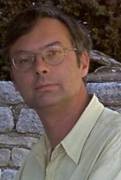
Jean-Philip Brugal
Jean-Philip Brugal is Head of Research of CNRS and President of the French National Committee of INQUA. He has worked extensively on mammal Palaeontology and has carried out a large amount of taphonomic and zooarchaeologic research. His current research focuses on palaeoecological reconstructions based on the analysis of mammal communities and on the exploitation of animal resources by Paleolithic hunter-gatherer communities. He is carrying out this research in the Plio-Pleistocene geological formations of East Africa (Kenya) and in several natural and archaeological Middle Pleistocene sites in southern Europe. These studies are being performed within the framework of national and international research programs; several of them under his direction and supervision.
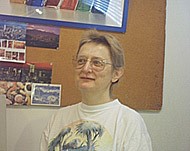
Yannicke Dauphin
Yannicke Dauphin is a professor at the Université Paris 6. Field of interest: In addition to their importance as sedimentary contributors, biologically produced minerals now appear as a major source of environmental information. Therefore, progress in understanding the sedimentological behaviour of biominerals as well as accuracy and reliability of measurements carried out on ancient skeletal structures are clearly linked to improvement of our knowledge of structural and compositional features of biominerals.
The aim of her research is to investigate the mechanisms by which shells, bones and teeth are preserved in fossil sites. Several areas are currently being explored. These include the investigation of the microstructure, mineralogy, chemical contents of the mineral and organic phases in recent shells, bones and teeth.
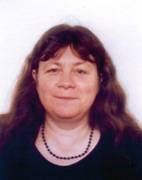
Chistiane Denys
Chistiane Denys is a professor at the Laboratory of Mammals & Birds of the Natural History Museum at Paris, and member of the Department of Systematics and Evolution. She is a widely-known expert in micromammal palaeontology and taphonomy. She is a member of several geological and palaeontological associations. Her research is currently focused on the evolution of modern and fossil African small murids (Mammalia: Rodentia) by the use of morpho-anatomical, morphometrics, taphonomy and phylogenetical techniques to infer biogeographical and palaeoecologcal implications. She has conducted extensive work on neotaphonomy of owl pellets and taphonomy of small mammals in several Plio-Pleistocene assemblages from various localities in Africa. She has supervised several research works, conducted numerous seminars and published extensively in the most relevant international journals.
She was an editorial member of the Taphonomy and Diagenesis Newsletter «TD News» from 1992 to 1998. She is currently the chief editor of Mammalia since 1999.

David Ferguson
David Ferguson was born on 4 June 1942 in Dunedin, New Zealand, but received most of his primary and secondary education in Scotland. He studied Geology at the University of St. Andrews (B.Sc. 1964), before going on to complete a M. Sc. in plant taxonomy at the University of Liverpool (England) under professor Vernon H. Heywood. he then moved to the Netherlands to study for his dissertation on Miocene leaf remains (1971) under professor Dr. F.P. Jonker at the Laboratory of Paleobotany and Palynology in Utrech. From 1969 until 1992 he taught Botany at the University of Antwerp, Belgium. It was here that he initiated his work on plant taphonomy. In 1992 he was appointed to the Chair of Paleobotany in Vienna. from 1996 to 1998 he was President of the European Palaeontological Association (EPA) and regularly acts as external examiner and advisor on palaeontological projects and positions.
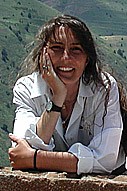
Yolanda Fernández-Jalvo
Yolanda Fernández-Jalvo is a researcher of the CSIC (National Council for Science) in the Natural History Museum of Madrid (Spain). She is an expert in taphonomy, especially in the field of microvertebrates. Her research has spanned different time periods and geographical areas, from middle Pleistocene sites such as Atapuerca to Plio-Pleistocene sites, such as Olduvai. She is one of the discoverers of the cannibalistic behavior of Homo antecessor. Current research interests: Processes of fossilization and diagenesis (Taphonomy), Taphonomic studies of micro macrovertebrates (hominids included) and pollen during the Holocene, Pleistocene and Pliocene, site formation, behavioural and palaeoenvironmental interpretations and their repercussion in biostratigraphic inferences and palaeoclimatic change interpretations.

Sixto Fernández-López
Sixto Fernández-López is a professor of Palaeontology at the Complutense University of Madrid, Spain. His research is mainly focused on taphonomy in the Jurassic and Cretacic periods. His expertise is ammonites. He has worked in several field projects both in Europe and south America. He has developed taphonomic frameworks both from an epistemological as well as from a methodological point of view.
He has published extensively in scientific journals.
More info at: http://www.ucm.es/info/paleo/personal/sixto.htm
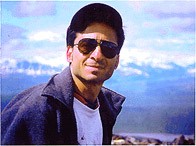
Anthony R. Fiorillo
Anthony R. Fiorillo received his Bachelor of Science degree from the University of Connecticut and his Master of Science degree from the University of Nebraska. He completed his Ph.D. work in vertebrate paleontology at the University of Pennsylvania in 1989. For the next two years he was the Rea Postdoctoral Fellow at the Carnegie Museum of Natural History, and then a museum scientist at the Museum of Paleontology at the University of California-Berkeley before becoming the Curator of Earth Sciences at the Perot Museum of Nature and Science, Dallas. He is also an adjunct associate professor at Southern Methodist University.
Although Dr. Fiorillo has worked on fossil deposits ranging in age 1.7 billion years old to those only a few thousand years in age, most of his research has focused on the paleoecology of dinosaurs and the paleoenvironments of dinosaur-bearing rock units. As a result of his research interests, Dr. Fiorillo has led numerous expeditions in western North America, particularly Texas, Montana, Wyoming, Colorado and now Alaska, in addition to field work in Asia, Australia, and South America. He has also published over 100 scientific and popular papers.
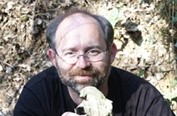
Philippe Fosse
Philippe Fosse is a researcher in the CNRS (Centre National de la Recherche Scientifique) in Toulouse (UMR 5608-UTAH). He has extensively worked on French Pleistocene and Holocene sites (Chauvet, Lunel-Viel, Montespan, Soleilhac …). His research is focused on paleotaphonomy and on zooarchaeology with a scope on the question of the first settlements in western Europe and the role played by carnivores in Pleistocene bone assemblage formation.
He has currently undertaken a large-scale research on neothaphonmy focused on bone modification produced by non anthropogenic agents under temperate settings (wild european predators and their associated scavengers, perthotaxic factors : decomposition, weathering) and on feeding of captive bone modificators (carnivores, birds of prey, rodents).
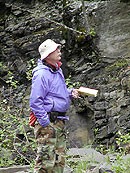
Robert A. Gastaldo
Robert A. Gastaldo is Whipple-Coddington professor of Geology at Colby College, Waterville, Maine, USA. He has been investigating plant taphonomic processes for the past 20 years, and has focused his research on actualistic macrofloral and microfloral (including palynofacies) studies in tropical (Sarawak & Kalimantan) and in Paleozoic and Tertirary settings in the northern hemisphere. Gastaldo has applied his results to understanding plant-bearing fossil assemblages within sequence stratigraphic contexts and interpreting Phanerozoic plant ecosystems. Presently, he has been conducting studies in Holocene carbonate (Bermuda) and north-temperate limnic (Maine) settings, and has been investigating the plant taphonomic character of Late Early to Middle Devonian environments in Maine.
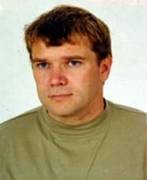
Michal Kowalewski
Michal Kowalewski (michalk@vt.edu) is a geobiology faculty in the Department of Geological Sciences at Virginia Polytechnic Institute and State University (Virginia Tech) in Blacksburg, USA. His research interests are at the interface between the biological and geological sciences with data collected over a wide range of spatial and temporal scales and projects ranging from non-applied studies in paleobiology to applied projects in conservation biology and Quaternary geochronology. Taphonomy of marine benthic invertebrates is one of the central themes of his research, including ongoing projects in quantitative taphonomy, time-averaging, and large-scale biases in the Phanerozoic fossil record.
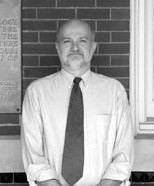
R. Lee Lyman
R. Lee Lyman is Professor of Anthropology at the University of Missouri-Columbia. Research interests include the late Quaternary mammalian biogeography of the northwestern United States, chronoclines in mammals, and prehistoric butchering practices.
He is the author of Vertebrate Taphonomy, Cambridge University Press.
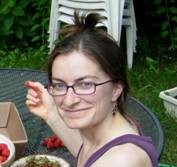
Maria McNamara
Maria McNamara is a researcher in the Department of Geology & Geophysics, Yale University, New Haven (USA) and is affiliated with the School of Geological Sciences, University College Dublin (Ireland). She specializes in the taphonomy of exceptionally preserved fossils and uses both fossil-based and experimental approaches to answering taphonomic questions. She is interested in how exceptionally preserved fossils inform us about the anatomy, physiology and behaviour of ancient organisms and, importantly, about biases in the fossil record. She has conducted extensive research into the taphonomy of vertebrates from several exceptional biotas (Konservat-Lagerstatten) from the Cenozoic of Spain, Germany and the Czech Republic, and has undertaken taphonomic experiments on vertebrate taxa. Her current research focuses on the taphonomy of structural colour.

Xavier Martínez-Delclós
Xavier Martínez-Delclós is a Lecturer on Palaeontology at the Faculty of Geology and on Taphonomy at the Faculty of History (from 1993 to 2000), from the University of Barcelona (Spain). His current scientific research focuses on Mesozoic and Cenozoic fossil insects, mainly dragonflies and their relatives, but also other groups such as Isoptera, Neuroptera and Hymenoptera, and on the preservation and evolutionary significance of exceptionally preserved fossil insects in amber and carbonate rocks. In order to investigate the taphonomic processes that control insect preservation, his research includes experimental work on the factors controlling decay, transport and fossilization. He has done field work mainly in Spain but also in other countries from Europe, Asia and South America.
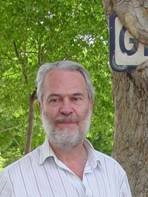
Miquel De Renzi
Miquel De Renzi was born in Barcelona (Spain) the 17th July 1941. He studied geological sciences at the University of Barcelona, where he obtained his PhD (1971). His research was focused on the fossil molluscs in the type area of the Ilerdian stage (Upper Palaeocene-Lower Eocene). Since 1977, he is full professor of palaeontology at the University of Valencia (Spain). For him, taphonomy plays an essential role in any palaeontologic research, from palaeobiology up to applied fields such as biostratigraphy. He has been a member of the scientific board of the two meetings on taphonomy and fossilization held in Spain (1990, 1996) and chairman of «Taphos 2002, 3rd Meeting on Taphonomy and Fossilization» held in Valencia in 2002. He has also been the main editor of the book «Current Topics on Taphonomy and Fossilization». He has written papers on theoretical questions related to taphonomy (position of taphonomy in palaeontology: palaeoecology, rates of evolution, biostratigraphy) as well as on empirical taphonomic research (taphonomic factors controlling the distribution of the Ilerdian molluscs, quantitative analysis of biases in studies of palaeoecology and rates of evolution).
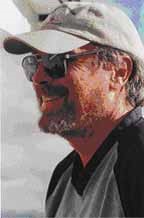
Lawrence C. Todd
Lawrence C. Todd. Professor, Department of Anthropology and Graduate Degree Program in Ecology, Colorado State University. Director, Laboratory of Human Paleoecology, Colorado State University. Research Interests: Ecology and archaeology of hunter-gatherers; Paleoindian/Paleolithic studies; paleoecology; faunal analysis and vertebrate taphonomy; archaeological formation processes, analysis/geoarchaeology; method and theory; site structural and spatial analysis; regional archaeological survey.
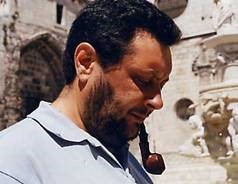
Gerardo Vega Toscano
Gerardo Vega Toscano is a professor of Prehistory at the Complutense University. His M.A. and Ph. D. were also obtained at the same university. His research is focused on middle and late Palaeolithic Archaeology, namely in Neandertal contexts. He has conducted extensive research in several archaeological sites in the South of Spain and he is a known especialist in biostratinomic and diagenetic modifications of stone tools. His greatest achievements have been focused on the discovery of the latest neandertals. He has approached and applied taphonomic principles to the study and analysis of lithic artefacts and their modifications. He has applied these concepts in his field work by using lithic tools to obtain a valuable information of the taphonomic processes undergone by archaeological sites. He is currently involved in the excavation of several sites, among which the famous Carihuela and El Palomar caves are his main projects.

